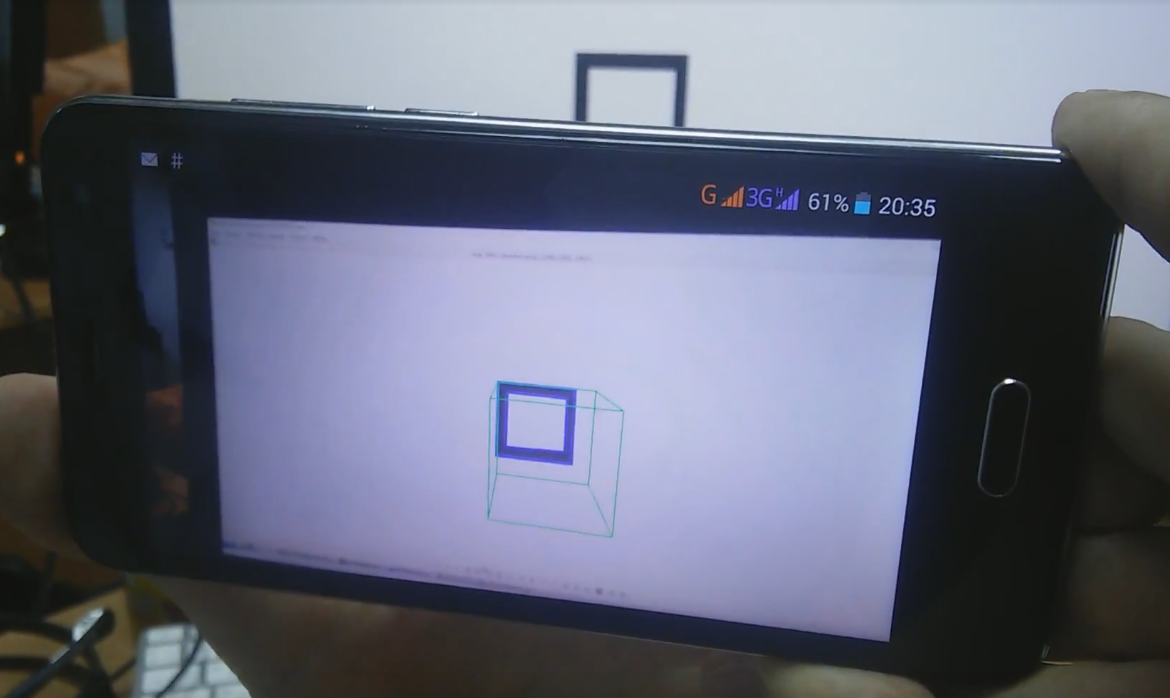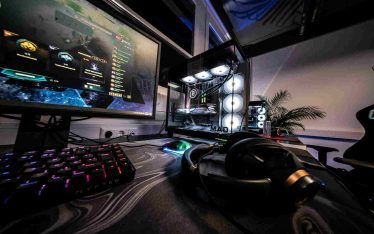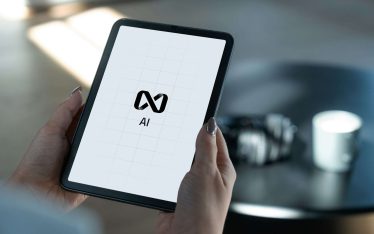We continue to describe our R&D Hackathon experience.
- This technology has several interesting use cases.
- Advertisement (to receive more information about goods);
- Construction (to animate what is behind a wall: pipes, wires, etc.);
- Video games (more fun).
An Example 3D Application
A customer chooses goods in a shop. He sees a T-shirt he’s interested in and a label near this T-shirt. The customer points his smartphone camera at the label and sees on the smartphone screen some animated 3d-scene in Augmented Reality. The scene could be represented in any way, like a rotating 3D T-shirt with additional info or some animated character who starts to talk about the item.
The team concentrated on implementing a basic proof of concept: to show a 3D figure in AR after directing a smartphone on a certain 2D marker.

Tools for App
OpenCV, Java and Android Development Kit were used to make a simple prototype.
- The OpenCV library has several benefits. It is:
- Multifunctional,
- Well tested,
- Has clear APIs,
- Crossplatform.
Java and Android are widely used and is well adapted for quick prototypes.
How It Works
The application scans a 2D-marker in a small frame, from top-left corner to right-bottom. Then whole marker is built in memory. After this, the program compares the 2D-marker with a database set of 2D-markers and corresponded 3D-scenes. If a match is found, the OpenCV library starts to render a 3D scene.
Implementation Notes
As it often happens, the main time expense was in setting up. Installing and building the project and installing all the libraries. The team prepared a virtual machine (lightweight Ubuntu) prematurely and installed the Android SDK and NDK. Then, the project on Github was created, where necessary libraries and frameworks were included.
During 4 hours that was provided for the Hackathon the team implemented recognition of a simple marker and rendering of a simple 3D-geometric figure on this marker.
To scale, we could further implement and test recognition of a complex markers.
If we did it again…
- The team concentrated mostly on the technological and algorithmic parts of the task. Next time:
- A plan for execution is critical to the success of the project including how to break down the project and delegate to team members.
- Peripheral tasks, like project creation or addition of libraries should be solved before the Hackathon.






